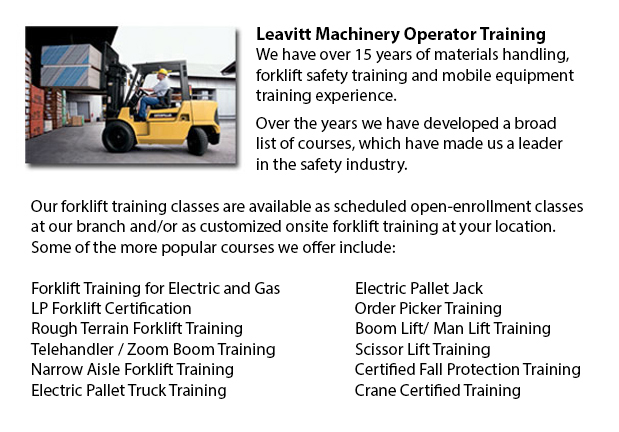
There are in fact two distinctive categories of forklifts within the material handling market, the industrial model and the rough terrain model. Rough terrain forklifts first arrived on the marketplace in the 1940's and were primarily used on uneven surfaces, perfect for areas where no covered roads were accessible, like construction sites and lumberyards.
Rough terrain forklifts usually utilize an internal combustion engine with a battery for power. The engines are able to function on propane, diesel or gasoline. Some suppliers are playing with rough land forklifts that make use of vegetable matter and run from ethanol. Substantial pneumatic tires with deep treads typify these vehicles to allow them to grab onto the roughest ground type without any slippage or drifting.
The initial models of rough terrain forklifts were able to transport weights of up to 1000 lbs, using forks that could slide under the item, lift it a little bit and then transfer it to a different location. After a decade on the market, rough terrain vehicles had been given supplementary hauling strength to about 2000 lbs capacity. In the 1960's telescoping booms were added, permitting them to stack supplies a great deal higher than in preceding years. The telescoping model characteristic is a staple of most rough terrain lift trucks nowadays. Present designs are capable of handling well over 4000 lbs due to the constant enhancements through the years. Telescoping capability has also improved with some models attaining a height of 35 feet. Operator safety has also become a focus with several all terrain lift trucks now developed are outfitted with an enclosed cab for the operator, as opposed to the older open air seating capacity.
The all terrain lift trucks existing these days work just as well on paved floors as on unpaved roads. These all terrain lift trucks are being marketed for their usefulness allowing establishments to transport parts from outside the plant to the inside or vice versa.
-
Boom Lifts
Boom Lifts are a platform lift device which could be raised or lowered to varying heights, making this equipment a helpful instrument for many industrial uses. There are many different types of Boom Lift consisting of knuckle booms, scissor lift truc... More -
Nissan Forklift
Nissan takes immense delight in attaining overall client satisfaction, when their customer is experiencing one of their many products including cars, trucks, and lift trucks. Nissan Motor Co. Ltd is the parent company to Nissan's Forklift division. T... More -
Reach Trucks
Reach Trucks are mechanized equipment utilized for loading and storage in some firms that maintain storage of cargo to finished goods on a pallet which are then inserted into high shelving units. This loading machine helps organizations safely and ea... More -
Hyster Forklift
Hyster is now a world leader in lift trucks as well as warehousing solutions. However, it started as a producer of lifting equipment and winches. Most of its production was concentrated in the Pacific Northwest and dealt primarily with the timber a... More -
Crown Forklift
More

Forklift Training Fort McMurray
TOLL FREE: 1-888-254-6157
Fort McMurray, Alberta
forklifttrainingfortmcmurray.com
Email Us
About Us


